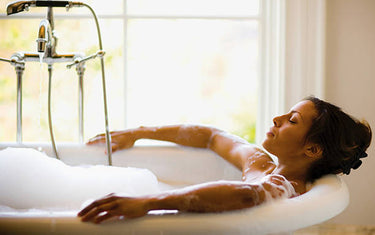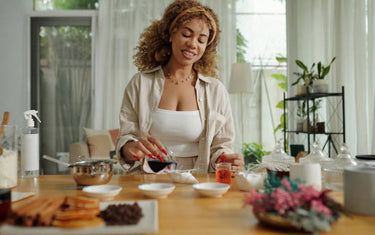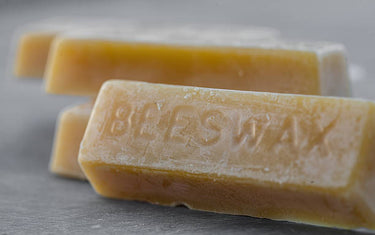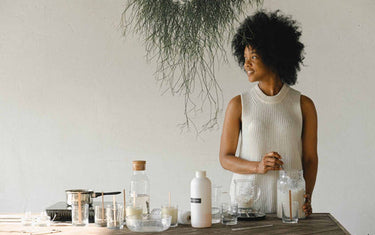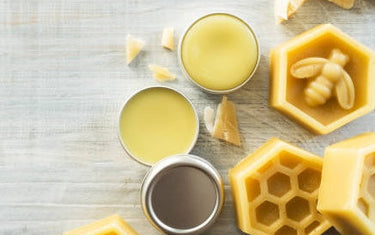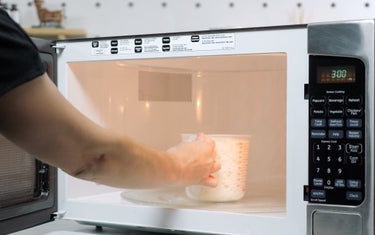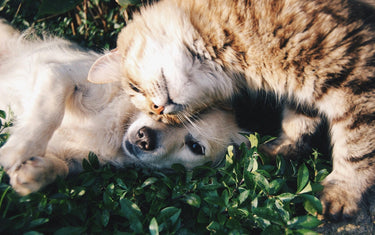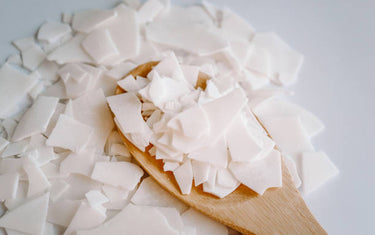4 min read / 27 November 2023 / yasmin sharp
How to Make CLP Labelling for Wax Melts and Candles
Explore the essentials of CLP labels for wax melts, offering a comprehensive guide to compliance, design, and best practices.
Share this post
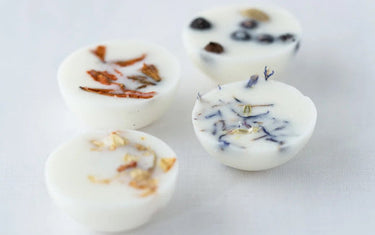
You may already be aware that using CLP labels for wax labels is a legal requirement if they contain essential oils or fragrance oils.
However, if you are new to selling wax melts or are finding it difficult to locate the correct information, you may need some help on what you need to do.
We’ve put together a complete guide about why CLP labelling for wax melts is important, including an overview of the type of information you will need to use.
What is a CLP label for wax melts?Using a CLP label for wax melts is a legal requirement for products that contain potentially harmful chemicals or substances. However, this only applies to wax melts that are being sold to the public and not to items that are gifted to friends and family. CLP stands for Classification, Labelling and Packaging and falls under the wax melt legal requirements as defined by the Classification of Labelling and Packaging legislation (CLP regulation). The labels include information about the type of substances contained in the product, ensuring customers are aware of any health issues that could arise from using it. Failure to comply with CLP regulation can result in fines or removal of products from the market. To ensure your products are compliant, you’ll need to provide accurate details on the substances used, including the appropriate hazard pictogram and product identifier. |
Understanding CLP Labelling
To create compliant labels, you need to follow the detailed guidelines set by CLP regulation. This includes selecting the correct hazard pictogram and ensuring the text is legible and placed appropriately.
Each element, from the product identifier to the hazard and precautionary statements, must be accurate and easy for consumers to understand.
By meeting these standards, your products will not only be legally compliant but will also reflect your brand’s dedication to safety and quality.
Do wax melts need CLP labels?
If you are selling melts that contain essential oils or fragrance oils, then you are legally required to add CLP labels to your products.
Using a CLP compliant label for wax melts not only ensures your products meet legal standards, but it allows your customers to make informed decisions about their purchases.
Due to their high concentration levels, some essential oils and fragrance oils can trigger skin irritations and allergies.
So, to safeguard the health and safety of users, warning labels for wax melts (CLP labels) are used to display any relevant warnings. Wax melt labels can also serve as a marketing tool to showcase your business name's commitment to safety and quality.

CLP Labelling: What to Include
CLP labelling for wax melts has several requirements, with the product maker responsible for including information such as:
- Product identifier: This displays the name of the product and the essential oil or fragrance oil being used.
- Allergen information: A CLP label for wax melts must also list all the ingredients that could trigger a reaction. This is typically a list of the chemical compounds that are contained in the oil.
- UFI number: The product must have its own Unique Formula Identifier (UFI) - a 16-character alpha-numeric code that allows potentially dangerous substances and chemicals to be identified.
- Signal word: Severe hazards must use the signal word ‘danger’ whilst less severe hazards must use the word ‘warning’.
- Hazard and precautionary statements: Hazard and precautionary statements inform the user about the nature and severity of the hazards. They also offer advice on ways to prevent or reduce potential side-effects.
- Hazard pictograms: Based on the type of fragrance oil or essential oil used in the wax melt, you will need to add a hazard pictogram that depicts the relevant health risk. There are also strict design guidelines relating to their size, shape and colour.
- Supplier contact details: Full contact details must be provided, as this is a legal requirement for insurance purposes and to ensure customers are fully aware of who it is they are buying from. This should include your telephone number.
Every wax melt that contains a different essential oil or fragrance oil must have its own CLP label.
For example, if you have a batch of 50 lavender oil wax melts, and another batch of 50 orange oil wax melts, you will need a different set of labels for each batch.
For more detailed guidance, refer to our article on CLP label size requirements.
How to make CLP labels for wax melts
If you want to make CLP labels for wax melts, there are a few ways you can do this.
The first is at home on your PC or laptop, although you will need Microsoft Word.
Here you can locate ready-made templates you can use that only require you to add the relevant product information.
Another option is to use a template online. After a quick search, you will find quite a few websites that allow you to download CLP label templates you can print off at home.
Lastly, if you do not own Microsoft Word or do not own a printer, you can use a professional printing service to create the labels, although this will incur additional costs.

Making a CLP compliant label for wax melts can feel like a daunting task, especially when you see the amount of detail required.
But once you get started, you’ll likely be surprised how quick and easy the process can be, and it also means you’ll be up to date with current legislation.
Plus, as a small business, ensuring your CLP labelling for wax melts is accurate gives your customers more confidence, whilst adding more credibility to your brand, which can go a long way to establishing your products and helping you grow.
Want wax melt supplies for a discount? Sign up for Nikura’s wholesale program and get access to exclusive discounts and offers.
For more tips, see our guide on how to sell handmade candles and wax melts.



